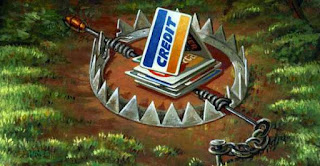November is Diabetes month.
A shocking 9 million Canadians live with diabetes or prediabetes and 371
million people globally are living with the disease (although it is estimated
that an additional 187 million people have no idea that they are suffering from
the condition). Estimates predict that
one-third of Canadians and 552 million people globally will have diabetes by
2030. This number is shocking
considering that diabetes was largely non-existent only decades ago.
Diabetes describes a medical condition where a person has
high blood glucose (blood sugar). 90% of all cases worldwide are Type 2
diabetes where the body does not produce enough insulin or the body does not
properly use the insulin it makes.
Insulin is important to help your body control the level of glucose in
the blood and obesity promotes insulin resistance.
The Globe and Mail had an entire section on diabetes in
yesterday’s edition of the paper. I
found two things particularly striking.
The first was the content of the stories in the newspaper. Some chronicled the lives of people with
diabetes, others talked about the importance of medical treatment of diabetes –
particularly the need to shift from acute to chronic care – while others
promoted the importance of exercise and an active lifestyle. Although there was mention here and there
about eating habits, the only dedicated story I could find about the role of
food and beverage companies in the diabetes epidemic was on the back page on
the bottom right hand corner where there was a brief article warning consumers
about the breakfast cereal they choose to purchase and consume. I found this striking, largely because the
primary cause of diabetes and obesity is not exercise or poor treatment but
eating habits and the proliferation of processed foods that dominates the
supermarket. The food and beverage industry
produces enough food for each person on the planet to consume 3900
calories. The average consumption rate
is 2800-3200 calories and the recommended calorie intake is 1800-2000 for
females and 2200-2400 for males. A brisk
60 minute walk would expend 280 calories, not nearly enough to offset the
increased calorie intake that we’re seeing today. So then why don’t we see a dramatic
educational platform that educates consumers to move away from processed and
highly fortified foods?
The second surprising thing I noticed was a large one-page
advertisement for a diabetes awareness event with a listing of the sponsors for
the event. Almost all of them were
grocery store chains – Loblaw, Safeway, Metro, Zehrs, Your Independent Grocer,
among others. I was aghast from the
irony to the point where the secretary at the dentist office I was waiting in
thought I read a funny joke.
Perhaps I had.
Here we have the proliferation of one of the most widespread
diseases in our society linked closely to one of the most alarming trends in
our society (obesity), and the main sponsors of creating awareness are the same
companies that litter 90% of their stores with the very crap that is causing
the disease. Walk into any one of these
grocery stores and you’re bombarded by messages to purchase and consume
unhealthy products.
But then is it really their fault? Isn’t the food in these grocery stores merely
reflecting consumer demand? I’m sorry to
say that anyone who thinks that these grocery store chains are not complicit in
the proliferation of diabetes does not understand the fundamentals of
business. The food that would sharply
curb the incidences of diabetes (e.g. fruits and vegetables, cheese, and nuts)
have virtually zero profit potential for business, which is why these sorts of
products are relegated to the outside aisles of the grocery store, perceived as
poor cousins to the very sexy and highly marketed value-add processed goods
that have some tiny yet manipulated remnant of one of these raw foods. The money lies in processed food where food companies
can add value to products and grocery store chains can capture a larger
percentage of the price for their own margin.
On top of this, as a grocery store you’d be more interested in selling
products that have properties that would encourage consumers to buy more. Sugar, salt and fat are addictive, so if I’m
a smart business person, I know that it would be more worthwhile for me to
stock my shelves with foods containing these ingredients than with foods that
don’t. As a consequence, because consumer
responsibility implies choice, grocery stores play a very active role
(intentionally or not) in limiting the choice available to consumers so that
they purchase higher margin, addictive products.
The irony behind grocery store sponsorship of diabetes
awareness reminds me of Corporate Knight’s recent endorsement of Loblaw as the
most responsible company in Canada. In
another blog posting, I put forward a rather harsh criticism of this
endorsement largely because Corporate Knights completely overlooked the
products in the store aisles and the impact these products have on society and
the environment.
These sorts of “slap in the face” initiatives by companies
drive me absolutely nuts! Any company
representative reading this will remark on how much they’ve improved their
healthy product offerings through an organic section or through more general
healthier alternatives. But what they
can’t come to grips with is that their business model is fundamentally at odds
with societal interests to reduce obesity and diabetes. I sympathize with these companies. How would you feel if a majority of your products that you sell to consumers is closely linked to a disease that is killing them? On the other hand, it's important to consider purchasing power these grocery chains have to elicit change in the food and beverage supply chain. Are they using it to the best of their ability? Shouldn't they be spending their resources on making these more fundamental changes to the food and beverage value chain rather than spending it on these sorts of sponsorship activities that represent band aid solutions to a more complex problem?





